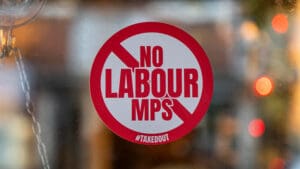Britain’s electricity demand has risen for the second year in a row after two decades of decline, marking a decisive turning point as electric vehicles, heat pumps and AI data centres usher in a new era of electrification.
Provisional figures for 2025 show electricity consumption rose by 3 per cent, the fastest annual increase since 2001, according to analysis by Imperial College London for Drax Electric Insights. It is the first time the UK has recorded two consecutive years of demand growth since 2002–03.
Electricity use reached an estimated 273 terawatt-hours (TWh) this year, up from 266 TWh in 2024 and 262 TWh in 2023. Demand had peaked at 347 TWh in 2005 before falling steadily as appliances became more efficient, heavy industry declined and parts of the economy de-industrialised.
That long-term trend now appears to have reversed.
“We have reached a turning point after 20 years of demand falling,” said Iain Staffell, associate professor of sustainable energy at Imperial College and lead author of the Electric Insights analysis. “Electric vehicles, heat pumps and the data centres powering AI are now pushing up electricity demand.”
The rise reflects rapid electrification across transport, heating and digital infrastructure. Installations of heat pumps increased by around 20 per cent in 2025, while electric vehicle sales jumped 28 per cent, with roughly one in three new cars sold now electric. Power demand from data centres, fuelled by artificial intelligence, is also accelerating. It is estimated to have doubled since 2020 and now accounts for 3–4 per cent of UK electricity consumption, with projections suggesting it could exceed 10 per cent within a decade.
The Climate Change Committee has previously warned that electricity demand may need to at least double by 2050 if the UK is to meet its decarbonisation targets, a scenario that underpins government plans to expand generation capacity and upgrade the national grid at a cost of tens of billions of pounds.
Crucially, the analysis shows that the extra demand in 2025 was met entirely by cleaner power. Renewable generation rose sharply, led by a 35 per cent surge in solar output following the sunniest year on record and the connection of new solar farms. Solar still accounted for only 7 per cent of the total electricity mix, but wind remained the single largest source at 31 per cent for the second year running.
Gas-fired generation provided 28 per cent of electricity, while nuclear output fell to just 12 per cent — its lowest share since 1980 — after extended maintenance outages and unplanned shutdowns at ageing reactors.
“Our power system got cleaner at the same time as growing,” Staffell said. “Renewables met all the extra demand placed on the grid.”
Carbon emissions from electricity generation fell to their lowest level since 1938 following the final closure of coal-fired power stations in 2024. However, the cost impact was less benign. Wholesale electricity prices rose by 12 per cent over the year, driven by higher gas prices and a sharp increase in carbon costs.
The data underline a fundamental shift in the UK energy system: electricity demand is rising again — not because of inefficiency, but because power is replacing fossil fuels across the economy. The challenge now is whether generation, networks and storage can scale fast enough to keep pace without pushing costs sharply higher for households and businesses.
Read more:
UK electricity demand rises for second year running as EVs, heat pumps and AI drive surge










